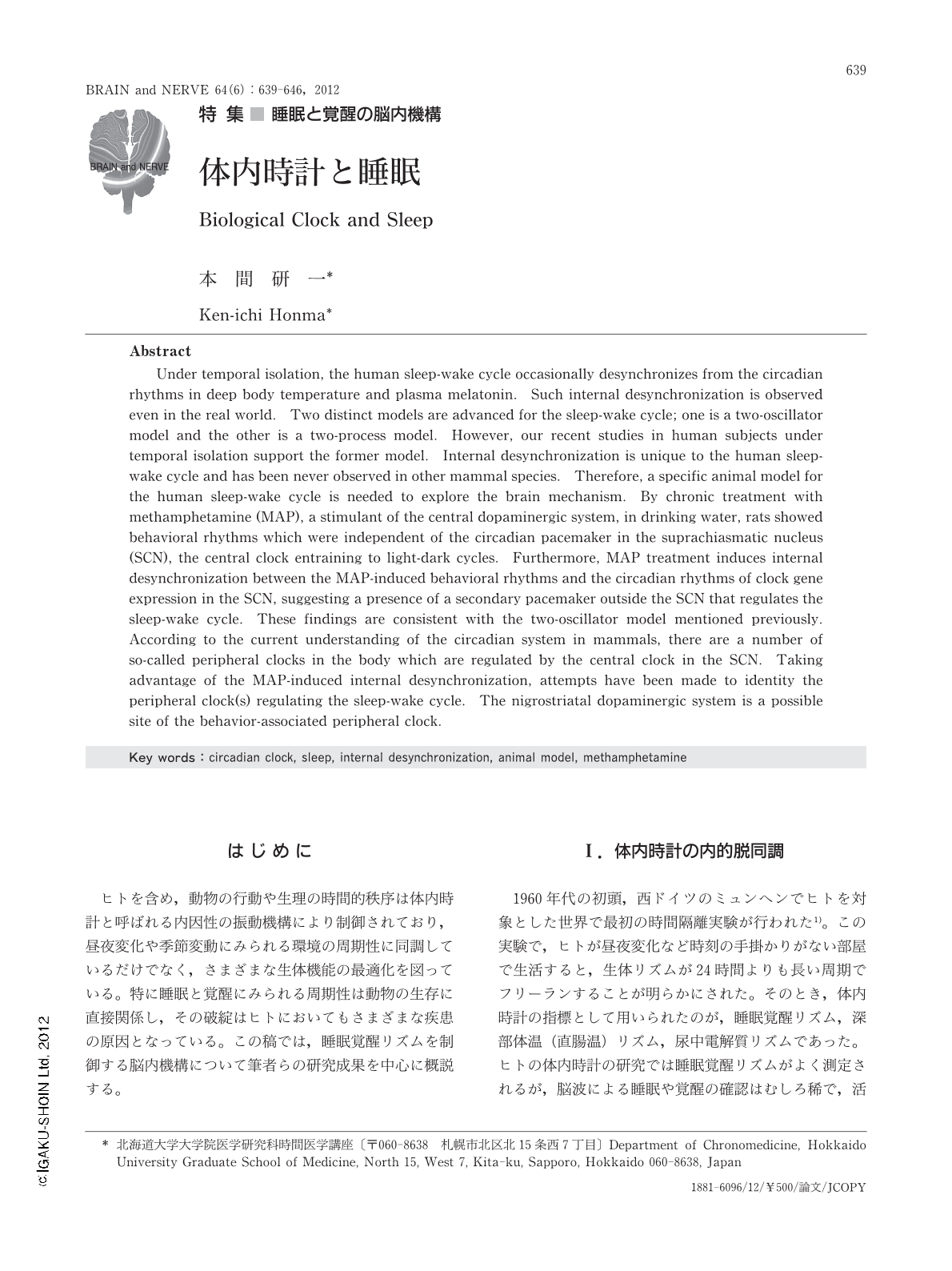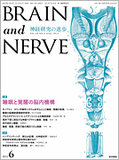Japanese
English
- 有料閲覧
- Abstract 文献概要
- 1ページ目 Look Inside
- 参考文献 Reference
はじめに
ヒトを含め,動物の行動や生理の時間的秩序は体内時計と呼ばれる内因性の振動機構により制御されており,昼夜変化や季節変動にみられる環境の周期性に同調しているだけでなく,さまざまな生体機能の最適化を図っている。特に睡眠と覚醒にみられる周期性は動物の生存に直接関係し,その破綻はヒトにおいてもさまざまな疾患の原因となっている。この稿では,睡眠覚醒リズムを制御する脳内機構について筆者らの研究成果を中心に概説する。
Abstract
Under temporal isolation,the human sleep-wake cycle occasionally desynchronizes from the circadian rhythms in deep body temperature and plasma melatonin. Such internal desynchronization is observed even in the real world. Two distinct models are advanced for the sleep-wake cycle; one is a two-oscillator model and the other is a two-process model. However,our recent studies in human subjects under temporal isolation support the former model. Internal desynchronization is unique to the human sleep-wake cycle and has been never observed in other mammal species. Therefore,a specific animal model for the human sleep-wake cycle is needed to explore the brain mechanism. By chronic treatment with methamphetamine (MAP),a stimulant of the central dopaminergic system,in drinking water,rats showed behavioral rhythms which were independent of the circadian pacemaker in the suprachiasmatic nucleus (SCN),the central clock entraining to light-dark cycles. Furthermore,MAP treatment induces internal desynchronization between the MAP-induced behavioral rhythms and the circadian rhythms of clock gene expression in the SCN,suggesting a presence of a secondary pacemaker outside the SCN that regulates the sleep-wake cycle. These findings are consistent with the two-oscillator model mentioned previously. According to the current understanding of the circadian system in mammals,there are a number of so-called peripheral clocks in the body which are regulated by the central clock in the SCN. Taking advantage of the MAP-induced internal desynchronization,attempts have been made to identity the peripheral clock(s) regulating the sleep-wake cycle. The nigrostriatal dopaminergic system is a possible site of the behavior-associated peripheral clock.

Copyright © 2012, Igaku-Shoin Ltd. All rights reserved.


